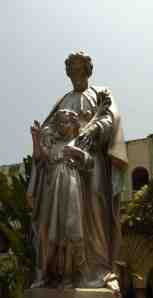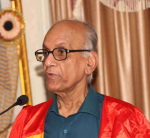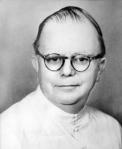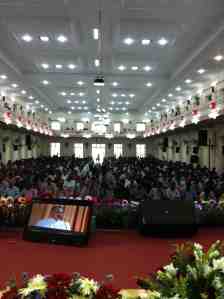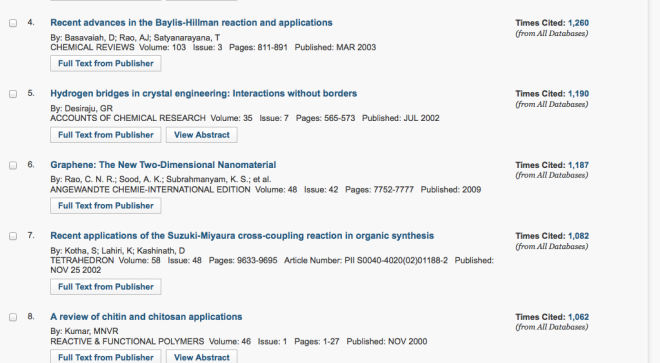 For reasons that are truly too dreary to get into, I had to spend a little time on the Web of Knowledge, that useful (but often dangerous!) engine of discovery. Again, for reasons too dreary to elaborate, I thought I would find out which scientific contributions from India were most significant in terms of their impact. Each of these terms is loaded, of course, but here are the filters that I applied.
For reasons that are truly too dreary to get into, I had to spend a little time on the Web of Knowledge, that useful (but often dangerous!) engine of discovery. Again, for reasons too dreary to elaborate, I thought I would find out which scientific contributions from India were most significant in terms of their impact. Each of these terms is loaded, of course, but here are the filters that I applied.
- I searched for papers that were published from India between 1 January 1999 and today. This amounted to a total of 540,649 publications in all.
- I removed all papers from this list where one or more authors was from the USA, bringing the number down to 515,720. (That’s 24929 collaborative publications between the countries in the past 15 years. Not a lot.)
- I further pruned the list by removing papers where there were coauthors from the UK, Japan, Germany, Switzerland and Russia. This brought the total to 484,153. (5 countries, 15 years, 31567 papers. Really not a lot.)
- Since one needs a valid subscription to the Web of Knowledge to see the results, I’ve put up a snapshot of the results page above, using the feature in WoK of ranking papers by “Times Cited”. This can tell you which papers have been cited maximally by other researchers.
- Judging impact by this indicator, it turns out that the paper with most impact that is purely “from India” is the 2002 IEEE TRANSACTIONS ON EVOLUTIONARY COMPUTATION publication, A fast and elitist multiobjective genetic algorithm: NSGA-II by K. Deb, A. Pratap, S. Agarwal and T. Meyarivan. Its been cited an impressive 5574 times.
What is really quite remarkable, and a matter of justifiable pride, is that the School of Chemistry of our University figures thrice in the top 10 papers in the list. The 2003 Chem. Rev. paper by Basavaiah, Roy and Satyanarayana, the 2002 Acc. Chem. Res. paper by Desiraju, and a 2002 paper by Kotha, Lahiri and Kashinath in Tetrahedron figure at Nos. 4, 5 and 7. While Profs. Basavaiah and Desiraju were on the faculty when these papers were written of course (and Prof. DB continues to be with us), Prof. Kotha of the IIT Powai is an alumnus, having earned both the M. Sc. and the Ph. D. from the UoH, in 1979 and 1985 respectively.
Some caveats. Of course, in this age of globalization the “from India” tag is not necessarily prized, and in any case it can be quite irrelevant as to which ideas are truly from India. Most cited is also not necessarily the most significant work, and a longer sense of history is needed to judge significance. In journal terms, the word impact has its own connotations, mostly negative, but still.
All this apart, its quite nice to see our work up there in the rankings. The institutional affiliations of other authors on the top 10 papers (to further normalize the list) include the IITs (Kanpur, Mumbai, and Roorkee), IUCAA (Pune), IISc (Bangalore), JNCASR (Bangalore), and JNU (New Delhi).
Pretty good company to keep.


